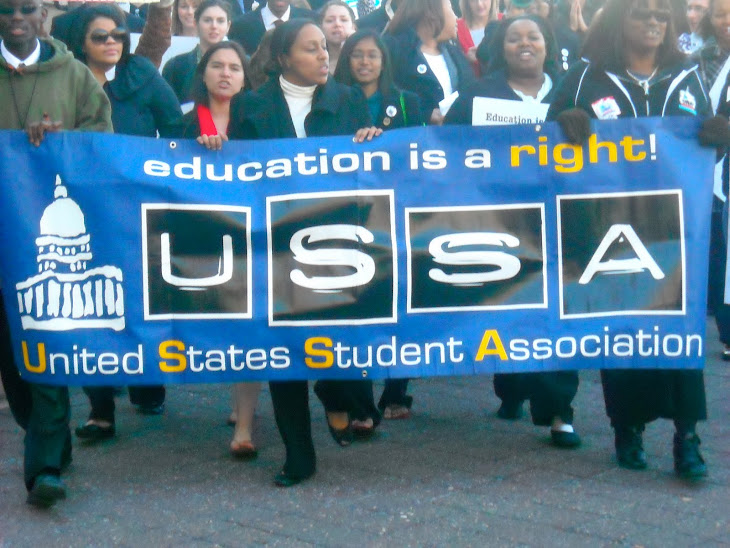
Chief among America's most revered ideals is that an education can propel anyone from the depths of destitution to the skies of achievement. This, along with socioeconomic reason, is why President Obama boldly announced in his first State of the Union address that the United States would once again lead the world in college graduation rates by 2020. Only three months later, the president took a major step forward in meeting this goal by signing historic student aid reform into law, investing about $40 billion in need-based federal financial aid over the next decade. The Georgetown Center for Education and Workforce recently concluded that the president's goal will require about $110 billion more from state governments, an unlikely feet considering over 30 states are implementing higher education budget cuts next fiscal year.
For the sake of argument, let's assume this goal is met, and more young people strut across American college graduation stages than anywhere else in the world. We still have to ask, who are these graduates?
The Advisory Committee on Student Financial Assistance recently found that, even with recent federal investments in financial aid, it is getting harder for low-income students to attend and graduate from college. In its most recent report, "The Rising Price of Inequality," the committee found that an increasing number of low-income students, who are academically qualified to attend college, are prevented from enrolling due to ballooning costs and insufficient grant aid. For a country that prides itself on merit-based success, this is unacceptable.
The report begins by emphasizing
"our financial aid system is founded on the principle that any youth, regardless of family income, should have the financial opportunity to do so, if he or she has the aspiration and prepares adequately."
Based on this principle, we are failing. Between 1992-2004, initial enrollment rates of academically qualified low-income high school graduates in four-year colleges dropped from 54 percent to 40 percent. Instead, they are beginning college at two-year institutions where they are over three times less likely to earn a bachelor's degree than their peers who began at four-year institutions. Based on this enrollment shift away from four-year colleges, the percentage of low-income students who earn bachelor's degrees will drop from 38 percent for those who graduated from high school in 1992 to 31 percent of those who graduate in 2004.
The cause of this drop, the committee found, was concerns about college expenses and insufficient financial aid. From 1992-2007, the net price of a four-year public college went from 41 percent of a low-income family's annual income to 48 percent. That was before the financial meltdown and subsequent explosion of unemployment. Grant aid is not keeping up. The Pell Grant, the cornerstone of need-based federal aid, has seen its purchasing power plummet nearly 40 percent since it was created. State need-based aid has fallen victim to budget cuts as well.
All of these causes and effects of massive education divestment are leading to a university reality in which degree attainment is based not on intellect or determination, but on affluence. The rich are going to college; the poor are being left behind. Despite the federal government's recent action around student aid reform, this situation will not change unless state governments stop using higher education budgets as their chopping blocks for deficit reduction. Even if it is not constitutionally mandated for a state to fund higher education, legislators have a duty to ensure their citizens are provided an opportunity to better themselves through a college degree regardless of income. At the very least it is sound, long-term fiscal policy to invest in college graduation rates.
The federal government isn't completely blameless either. Because the Pell Grant program is a discretionary spending item, Congress is under no obligation to provide it with funding. Therefore, year after year, it relies on the political sympathy of appropriators and budgetary breadcrumbs of "more important" spending items such as national defense. This year, to fill a $5.7 billion shortfall, Congress is proposing to fund the Pell Grant through a bill financing war operations in Afghanistan. Is this really what it has come to? The United States government has so little investment in low-income students attending college it has to rely on a war spending bill to fund the most basic need-based grant program? We can do better than this.
Not only are low-income Americans being kept out of college, they are being prevented from entering the middle class because of this exclusion. In 1970, 26 percent of the American middle class had a post-secondary degree; today that number has jumped to 61 percent. 91 million jobs in 2007 required at least some college education. A college education is a must for low-income Americans to break into the middle-class.
The United States Student Association praises President Obama's goal of having the United States leading the world in college graduation rates by 2020. However, we need to be mindful of who those graduates will be and vigilantly guard against policies that keep low-income, academically qualified high school graduates out of college. Education is right and if an individual works hard, as our financial aid system was built to ensure, that person deserves a chance to earn a college degree.

No comments:
Post a Comment